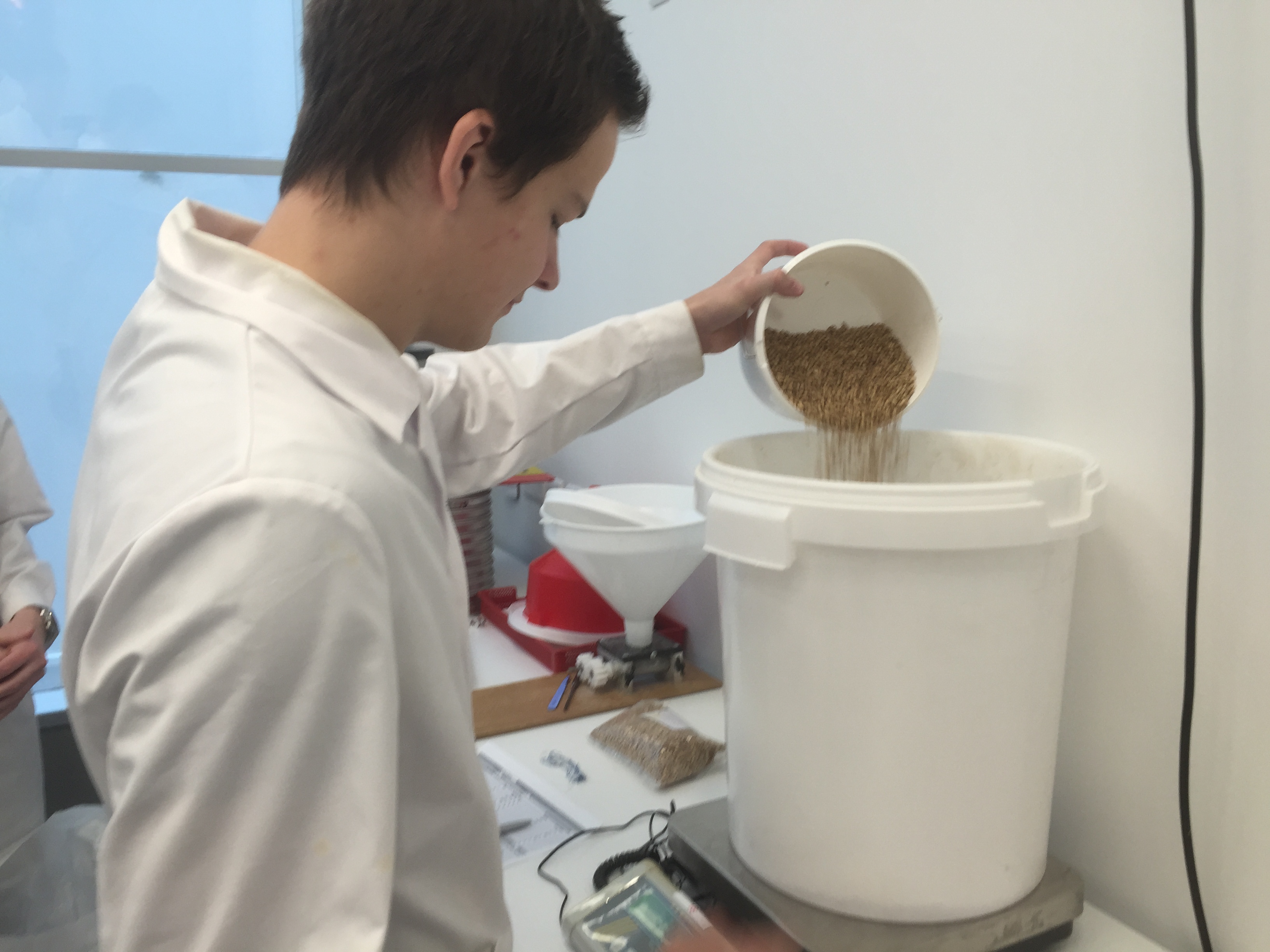
What is the formula for the ultimate Christmas beer?
Using chemical formulas, 5 chemical engineering students from the University of Southern Denmark can calculate what makes the ultimate Christmas beer. The ingredients include brown sugar, dried orange peel and cloves.
Five chemical engineering students wearing white coats go about taking notes while they pour water, hops, malt, yeast and brown sugar into a pan. Beer bottles mingle with beakers, and words like alpha acids, mono- and disaccharides can be heard over a white plastic bucket filled with malt. The contents of the bucket are emptied into something that resembles a blender.
- The most traditional Christmas beers are ale or lager, and we have chosen to make a dark ale. The yeast we have chosen is good for ale in that it doesn't convert all the sugar into alcohol as that would make the beer too bitter, says Jakob Lavrsen Kure who is studying for an MSc in Chemistry and Biotechnology.
He is among the 5 chemical engineering students who make up a team of brewers celebrating the coming of Christmas by brewing Christmas beer. With checklists, chemical calculations and searches on the internet for exactly the right types of yeast, the team are systematically working on finding the formula for the ultimate Christmas beer.
Caramel or chocolate malt
4500g pilsner malt, 900g Cara Hell and 500g brown sugar. Beside a laboratory scales lies a recipe that the 5 students regularly cast a watchful eye on.
- We arrived at the quantities of the different ingredients by using formulas. We calculated how much hops we should use in relation to how bitter the beer should be, explains Thor Høybye while he meticulously weighs out cloves on the scales, and the smell of Christmas begins to fill the laboratory.
For each ingredient measured there is a long back catalogue of unlimited possibilities. Basic malt, caramel malt, chocolate malt and other types of special malt. Malt, which is extracted from barley, comes in an ocean of different taste and aroma nuances.
- We have chosen a completely standard pilsner malt as a base. In addition we have used two different caramel malts which give the beer a round and sweet taste as well as a darker colour. We also added brown sugar to give it a slightly higher alcohol content as well as making the beer a bit sweeter, says Thor Høybye.
Tastes surprisingly good
Following the hunt for the exact ingredients and calculations for the right amounts of hops, yeast, malt and water, all the ingredients are mixed together and the brew is boiled - in brewery terms this is called 'mashing'.
- In the mashing, enzymes start to convert starch in the malt into mono- and disaccharides, which are different types of sugar that are water-soluble. The hardness of the water has no effect on the mashing itself but it can have great influence on the taste of the beer. Hard and soft water taste different due to the amount of different minerals in the water, explains Jakob Lavrsen Kure.
After mashing, the beer is poured into 32 bottles. A small amount of sugar is added to the bottles, which the yeast can convert into carbon dioxide so the beer isn't flat and boring. The bottles are put away and after a couple of weeks the beer is ready for tasting.
- The beer actually tastes really good! You can certainly taste that it is round and a bit sweeter, says Jakob Lavrsen Kure and takes another swig from his plastic cup:
- I can also taste that spices have been used. It's a slightly different aroma than expected, but nothing that's bad for the beer.